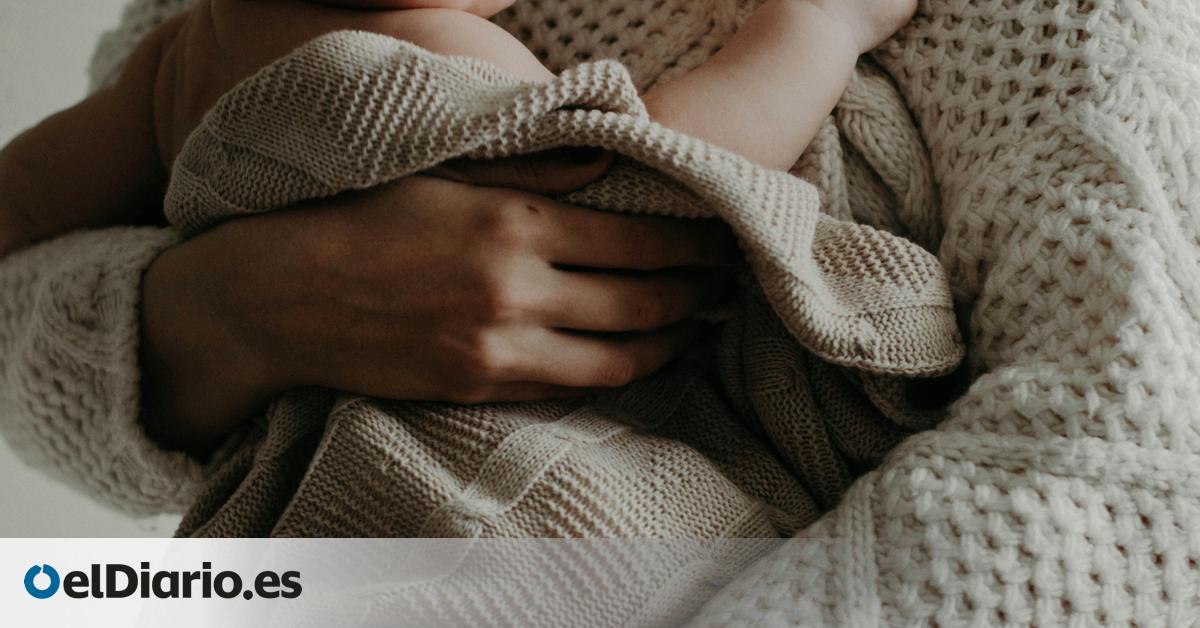
Maternity and paternity leave is not for everyone. As contributory benefits that they are, the criteria to access them mean that a part of the women and men who become mothers and fathers are left out. In 2022, the last year with complete data, almost 33.6% of mothers and 26.6% of fathers did not receive birth leave. This percentage implies a potential pocket of social exclusion: these are fundamentally people who are neither working nor collecting unemployment benefits or who have a hidden job and who face the arrival of a child without receiving any benefit.
The figures for 2021 are similar to those of 2022: 27.7% of fathers and 34.3% of mothers did not access the permits, according to data from Social Security and the National Institute of Statistics collected in the report. The reform of the parental leave system: forms of use and expectations of influence on co-responsibility, prepared by several researchers and published by UNED at the beginning of March. The difference between the data for fathers and mothers (more men than women access their birth permits or, in other words, more mothers than fathers are left out) is due to the relationship of the benefit with the labor market: Men have higher activity and employment rates than women and, therefore, there are more who meet the necessary conditions.
“In Spain there is no benefit system that covers the situation of having a child regardless of your relationship with the labor market. “Whoever is not participating is not covered, because the permit is conceived as a benefit to maintain the same income levels that you are demonstrating when you leave the market due to birth,” explains economist and UNED professor Cristina Castellanos, one of the authors. Of the report.
There are two circumstances that can cause the percentage of mothers and fathers who, according to the data cross-check, do not access permits to actually be somewhat lower. On the one hand, people who are covered by mutual societies, since they do not charge Social Security permission and, therefore, do not appear in their beneficiary data. elDiario.es has tried without success to access the figures for benefits paid by mutual societies. On the other hand, although the first six weeks of the leave are mandatory, there could be the case of beneficiaries who do not take them, since there is no penalty for not doing so, just as there is no penalty for not taking the vacations, which are also mandatory. Several experts consider that these two circumstances can influence the percentage, but not change it substantially: “At a macro level, this is the situation.”
Have a job
The criteria required by Social Security to access the 16 weeks of 100% paid birth leave are, first of all, being registered with Social Security or being in a situation similar to registration (the most frequent, being collecting unemployment although it also helps to have finished your benefit and still be registered as a job seeker). Secondly, a minimum contribution period: between the ages of 21 and 26, it is enough to have 90 days of contributions in the previous seven years, or 180 in your entire working life; After 26, that day requirement doubles. For those under 21 years of age, there is no requirement to have contributed. However, there is a special non-contributory birth subsidy for those who meet all the conditions except being registered with Social Security or a similar situation.
The microdata from the 2021 Birth Statistics allow us to know what situation the people who had children during that year were in on January 1. 63.6% of the women who became mothers during those 12 months were employed, while 76.4% of fathers were in the same situation. These are figures that largely coincide with the coverage rate for birth leave in 2021: 65.7% of mothers and 72.3% of fathers accessed the benefit. In 2021, 16.4% of new mothers and 7.8% of new fathers were unemployed. 15.8% and 7.7%, respectively, were in “another situation” and about 1% were students.
If someone has contributed for a sufficient period, but is not registered with Social Security or in a situation similar to registration, they cannot access birth leave. In this situation there may be people who have exhausted their unemployment benefit a long time ago or who are not registered as job seekers, those who receive some type of assistance assistance, those who are out of the labor market for care reasons, those who have been fired before of having a child and have not generated the right to unemployment, or those who have contributed sporadically at some point but not when they become mothers or fathers and are not receiving benefits either.
“There is a part of the population in such precarious situations that it could happen that at that moment a temporary contract has just ended and they are waiting for another one in a few months and are not interested in collecting their unemployment benefit yet in order to be able to chain another employment, contribute more and ensure better unemployment benefits in the future,” explains Cristina Castellanos. The economist emphasizes that the unemployment benefit does not cover the most precarious situations “but only the least precarious”: if you have contributed six years in a row you have up to two years of unemployment coverage, but those who have temporary or discontinuous contracts find it more difficult to generate a benefit. robust. Castellanos emphasizes that people with more entries and exits from the labor market are the ones who think the most about how to use their benefits, “because they are in a more risky situation.”
Social Security sources argue that birth benefits are a right that the parents must have generated “and that is only possible if they meet the requirements”, as is the case with the rest of pensions and contributory benefits. The Elma Sáiz department recalls that the Minimum Living Income seeks to offer a minimum level of income to those who are in a vulnerable situation and, if they have dependent minors, there is a supplement. 66% of the beneficiaries are women and in 66% of the homes where it is received there are minors.
Another sector of the population, especially women, that may be left out of birth permits are women who are economically inactive because they are dedicated to caregiving. The economist recalls that EPA data show that this is the main cause of female inactivity. A typical case, he explains, is that of a woman who perhaps withdrew from the labor market with her first child and by the time the second child arrives she no longer has the right to a permit: “But this is not usually a population at risk of exclusion in the short term, because “They are families in which the other salary is enough to support everyone.” The future economic autonomy of these women is, however, linked to her partner.
A protection loophole
Another study, in this case on the work trajectories of mothers and work-life balance policies, found results compatible with these data. The researchers focused on mothers born between 1968 and 1978 and observed them from ages 20 to 40. Of the 3,649 mothers in that cohort, 42.9% were not economically active “and that is why they could not use the leave when their first child was born,” says one of the authors, sociologist Teresa Jurado. Another 13% were active but could not collect it. “In another study with a larger sample we see that younger mothers used leave more,” she adds. The female active population has been growing steadily over time, as has employment.
This gap in social protection shows, according to Castellanos, the urgency of approving a universal benefit for parenting, but also the universalization of early childhood education or promoting the activity of women before having children. “It is not a problem of the design of the permits themselves but of the design of social policy in general. In the Nordic countries, design is based on individual rights, it has to do with the person’s relationship with the State, not with employment.” The economist recalls that having children increases the chances of being at risk of poverty, especially if one is outside the labor market. “Regardless of whether you have children or not, if you are in a vulnerable situation you should have an income. We should guarantee that all people had a minimum subsistence level to which amounts would be added for each child,” she points out. The Minimum Living Income, she concludes, has proven to have many problems in ensuring that social protection.
The Ministry of Social Rights has announced an extension of maternity and paternity leave under current conditions. However, department sources assure that they advocate creating the right to universal child-rearing benefits, included in the family bill. “The will is to move forward and consolidate this new right with a universal benefit of 200 euros from 0 to 6 years, in a first phase, and up to 18 years, in a later phase. We believe that the universality of this measure would contribute to alleviating the worrying data on child poverty and that fathers and mothers would also benefit from it, regardless of their employment status,” they say.
Source: www.eldiario.es

